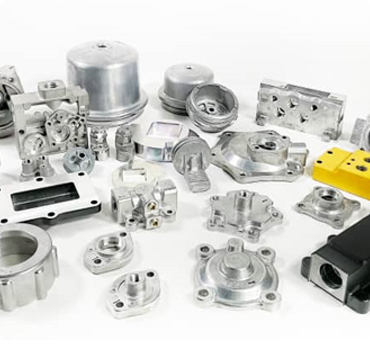In modern manufacturing, diecasting has become a fundamental technique offering effectiveness, accuracy as well as versatility across a variety of industries. It was developed in the late 19th century diecasting has morphed significantly thanks to advances in materials science and technology. This article explores the background, processes application, as well as the future of diecasting. We will also discuss its vital role in shaping the current manufacturing landscape.
Diecasting’s roots go in the early days of the first machine operated manually created by Sturges in 1849. It made it easier to produce lead printer’s types. It wasn’t until the 20th century that this process was recognized as a viable option with the introduction of high-pressure diecasting equipment. The machines, which utilized hydraulic technology, were able to enable an extremely fast and precise manufacturing of metal components that were intricate, making manufacturing more efficient across a variety of industries.
Diecasting is the process of injecting hot metal into a mold, also known as a”die”, with a the pressure of a high. The pressure guarantees that the metal is able to fill the mold and results with precise dimensions and final. After the solidification process is complete and the mold is opened, and the final product is removed to be ready for assembly or further processing. Diecasting is known for its capability to create complicated geometries and high precision, which makes it ideal for the mass production of the components that are utilized in the aerospace, automotive electronic, as well as the consumer goods industry.

One of the major advantages for diecasting lies in its ability to work with a diverse selection of substances, such as aluminum, zinc and copper alloys. Each has distinct properties including lightweight properties in aluminum, outstanding resistance to corrosion in zinc as well as a high strength-to-weight ratio for magnesium. The versatility of the material allows producers to customize their selection of materials in order to satisfy specific requirements for performance regardless of whether they’re for structural stability, thermal conductivity or aesthetics. For more information please visit here Senadiecasting
Automotive is one of the biggest consumers of technology that diecasts and heavily relying on precisely engineered components to maintain their durability and strength. Transmission housings, engine blocks as well as structural parts typically are made by diecasting because of their superior quality and strength-to-weight ratio as well as their dimensional precision. In addition, it allows the incorporation of functions like cooling channels or mounting points directly into components, speeding up assembly as well as reducing the overall cost of manufacturing.
As we look ahead, diecasting is continuing to develop with the introduction of new technologies, such as robotics, computer-generated simulations, in addition to additive manufacturing. Software for computer-aided designing (CAD) as well as simulation software help engineers optimize their parts designs to be used in diecasting while minimizing waste and time to production while increasing the performance. In addition, incorporating robotics during diecasting processes improves the efficiency and security by automating tedious tasks, and dealing with molten metals in dangerous areas.


